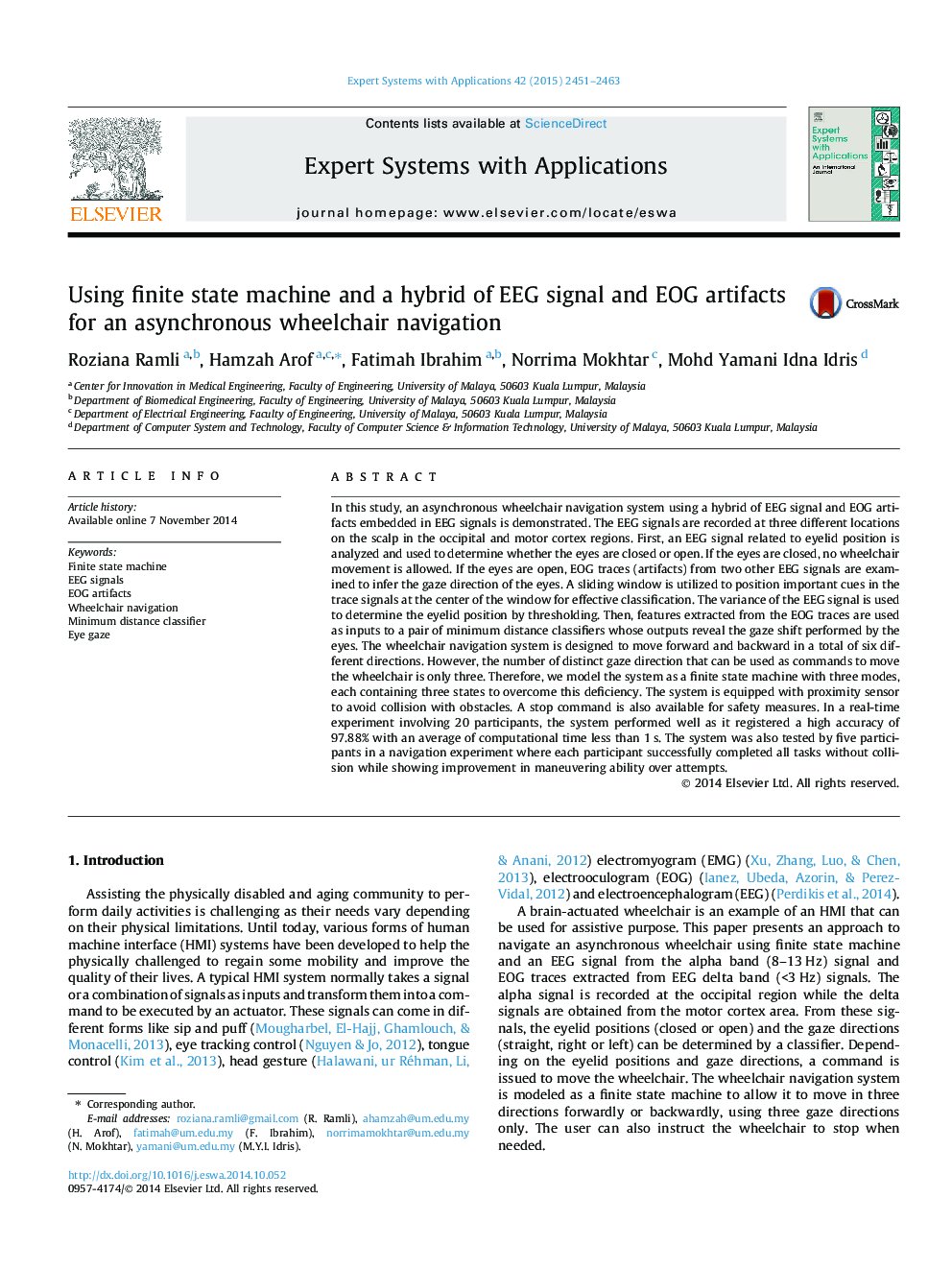| کد مقاله | کد نشریه | سال انتشار | مقاله انگلیسی | نسخه تمام متن |
|---|---|---|---|---|
| 382845 | 660794 | 2015 | 13 صفحه PDF | دانلود رایگان |

• Asynchronous wheelchair navigation system using EEG signals and EOG artifacts.
• Horizontal gazes are observed at C3, C4 and eyelid positions at O2.
• The system is modeled as a finite state machine with three states for each mode.
• Total of six different directions move in forward and backward.
• Actual navigation tasks are performed and registered an average accuracy of 97.5%.
In this study, an asynchronous wheelchair navigation system using a hybrid of EEG signal and EOG artifacts embedded in EEG signals is demonstrated. The EEG signals are recorded at three different locations on the scalp in the occipital and motor cortex regions. First, an EEG signal related to eyelid position is analyzed and used to determine whether the eyes are closed or open. If the eyes are closed, no wheelchair movement is allowed. If the eyes are open, EOG traces (artifacts) from two other EEG signals are examined to infer the gaze direction of the eyes. A sliding window is utilized to position important cues in the trace signals at the center of the window for effective classification. The variance of the EEG signal is used to determine the eyelid position by thresholding. Then, features extracted from the EOG traces are used as inputs to a pair of minimum distance classifiers whose outputs reveal the gaze shift performed by the eyes. The wheelchair navigation system is designed to move forward and backward in a total of six different directions. However, the number of distinct gaze direction that can be used as commands to move the wheelchair is only three. Therefore, we model the system as a finite state machine with three modes, each containing three states to overcome this deficiency. The system is equipped with proximity sensor to avoid collision with obstacles. A stop command is also available for safety measures. In a real-time experiment involving 20 participants, the system performed well as it registered a high accuracy of 97.88% with an average of computational time less than 1 s. The system was also tested by five participants in a navigation experiment where each participant successfully completed all tasks without collision while showing improvement in maneuvering ability over attempts.
Journal: Expert Systems with Applications - Volume 42, Issue 5, 1 April 2015, Pages 2451–2463